According to Encyclopedia Brittanica, theatre design is primarily concerned with enhancing the experience the audience can have at a performance. However, contemporary architects busy themselves with exploding the conventional typology of a theatre built in a more functional architectural style, as they transform it from closed-off structures into accessible ‘landmarks’ celebrating art in the urban context.
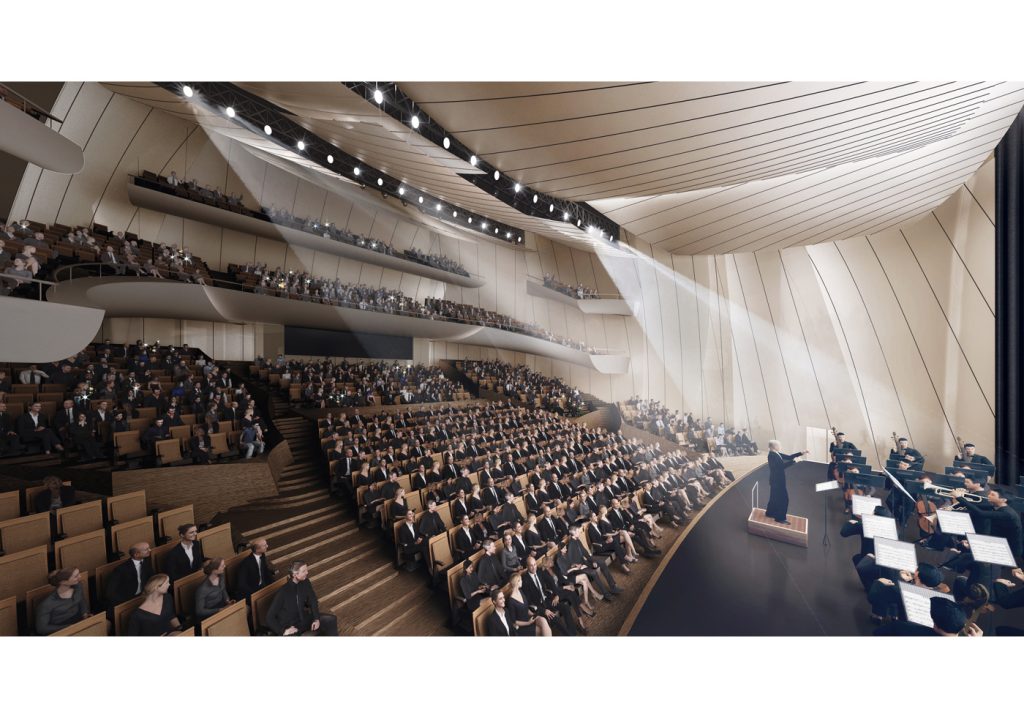
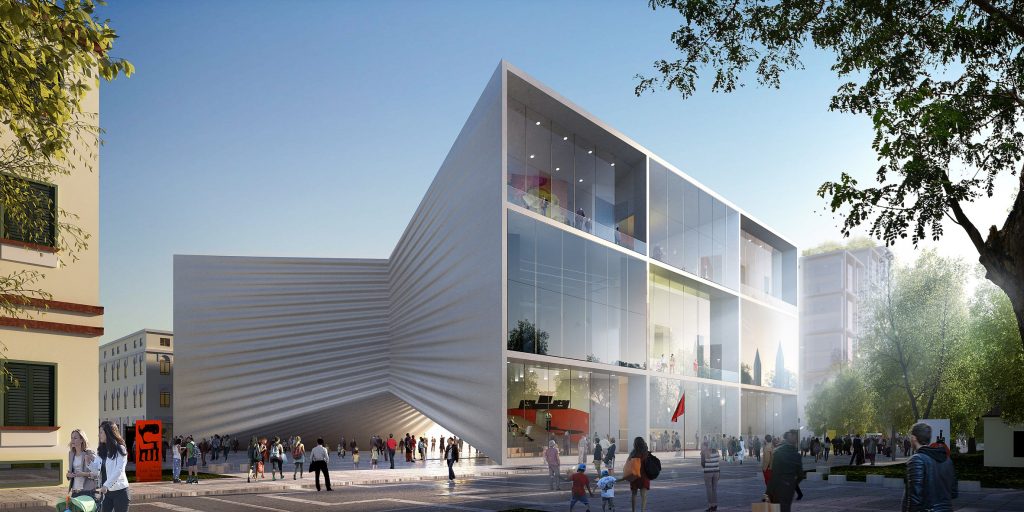
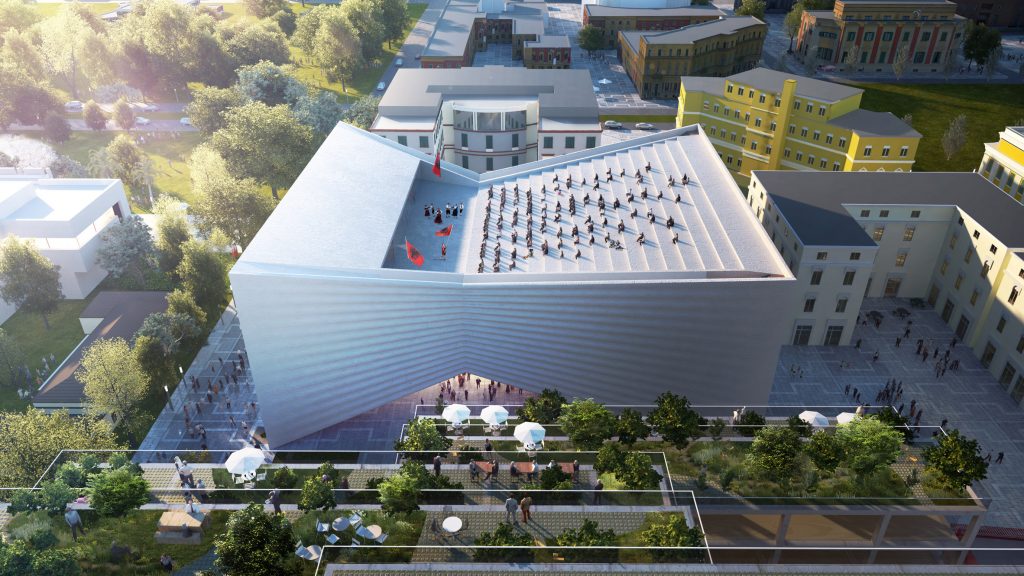
The National Theatre of Albania by Bjarke Ingels Group
Bjarke Ingels Group (BIG) architecture firm has unveiled its design for a new theatre building in Tirana, Albania, that is set to replace the city’s existing theatre. The design, described by BIG as “bow-tie-shaped”, is conceived as two buildings connected by the main auditorium: one for the audience and one for the performers. Underneath the main auditorium arching up from the ground as a gateway to the new urban fabric beyond is a public plaza for impromptu street performances and events. The structure is topped by the sloping roof accommodating an open-air amphitheatre with a backdrop to the city’s skyline.
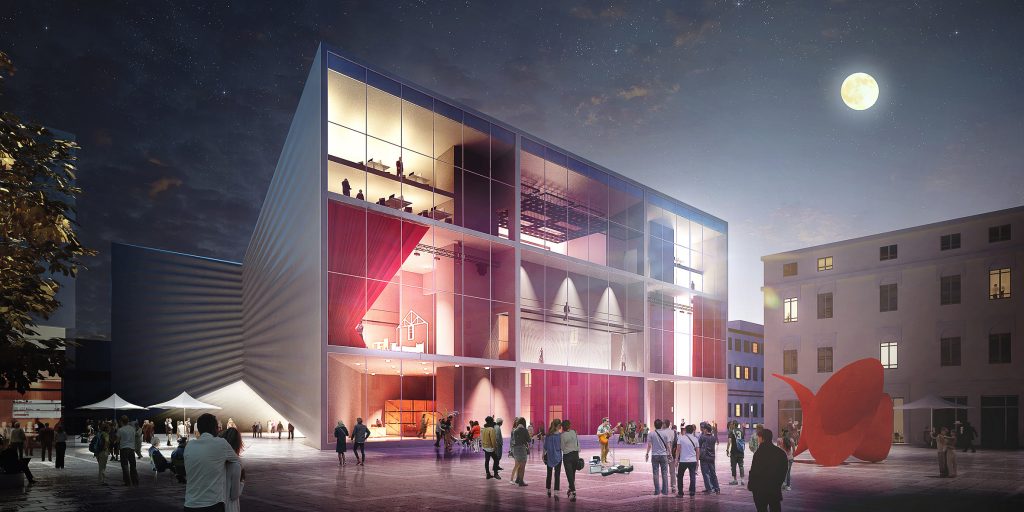
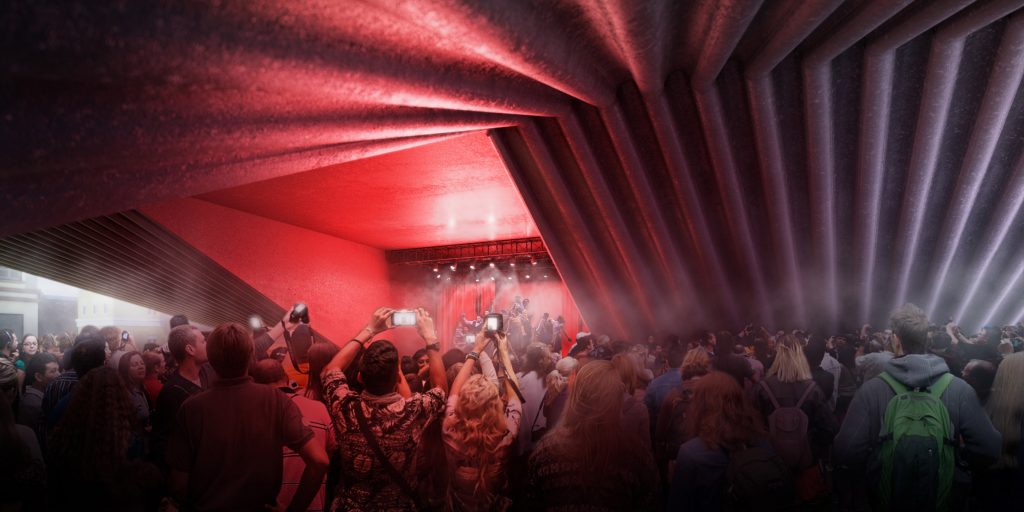
The National Theatre of Albania by Bjarke Ingels Group
Inside, two grand staircases lead up to the main foyer where visitors can further proceed either to the main auditorium or to one of the two smaller theatres.
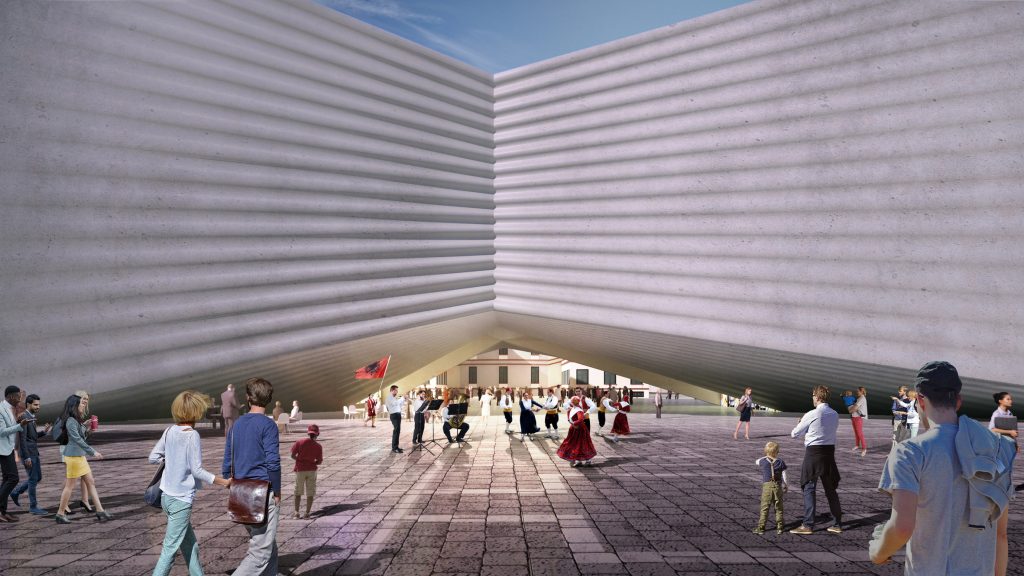
The National Theatre of Albania by Bjarke Ingels Group
The two main facades of the National Theatre of Albania are glazed to expose the spaces inside the building to the public outside. One side reveals a foyer, lounge, bar and restaurant as well as two experimental stages to passersby, “like rooms in a doll house.” The other side reveals the entire section of the backstage, side stages, under stage and fly tower, exposing the entire theater machine to curious observers. In this way, the new Albanian National Stage will become a spectacle of production as well as performance throughout the day, while typically a theatre wouldn’t be open to the public until the early evening.
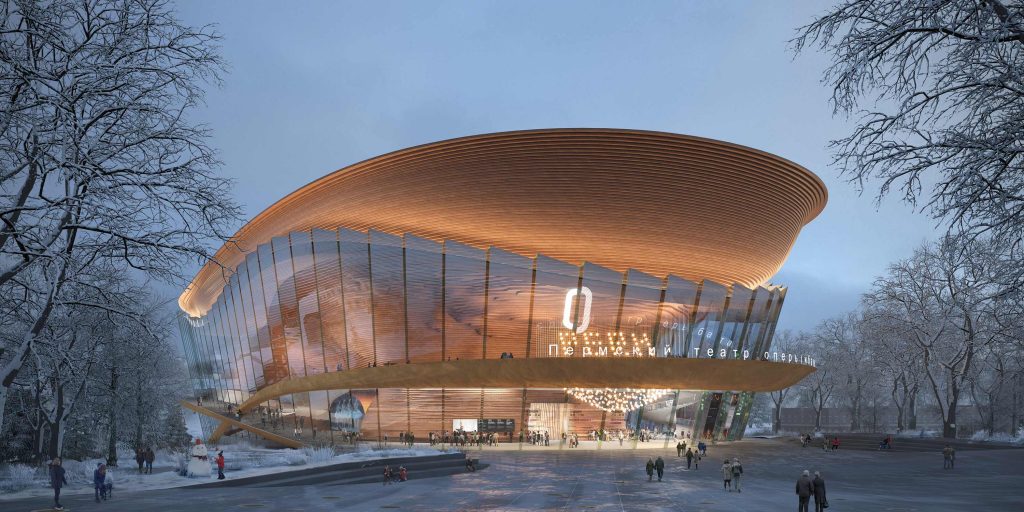
Tchaikovsky Academic Opera and Ballet Theatre by wHY Architecture
American studio wHY Architecture, founded by Thai architect Kulapat, has been selected to create a new building for Tchaikovsky Academic Opera and Ballet Theatre on the bank of the Kama River in Perm, Russia, near the Ural mountains. Their design strategy will radically reincorporate both the river and the landscape into the city’s cultural identity, creating a flowing, dynamic space which places art and nature at the center of urban life.
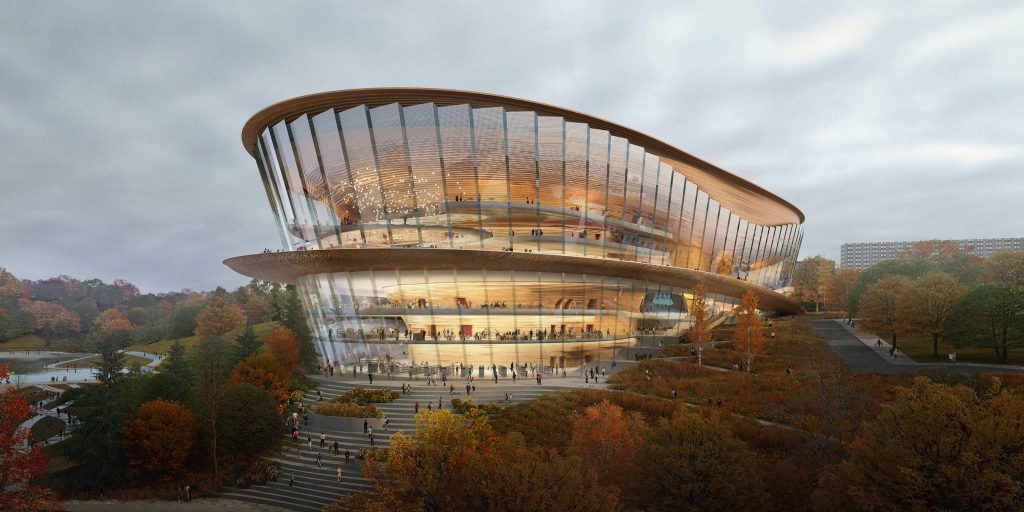
Tchaikovsky Academic Opera and Ballet Theatre by wHY Architecture
The overall design creates a dynamic focal point for the city. The existing Perm Opera and Ballet Theatre in the city is one of the country’s earliest, dating from 1870 Named after Russian composer Pyotr Ilyich Tchaikovsky who was born in the region, it is home to one of Russia’s most popular ballet troupes. Just like BIG, wHY plans to overturn the existing typology of the closed-off theatre, conceiving a building with wrap-around glazing that will give views over the landscape, and allow the public to see in.
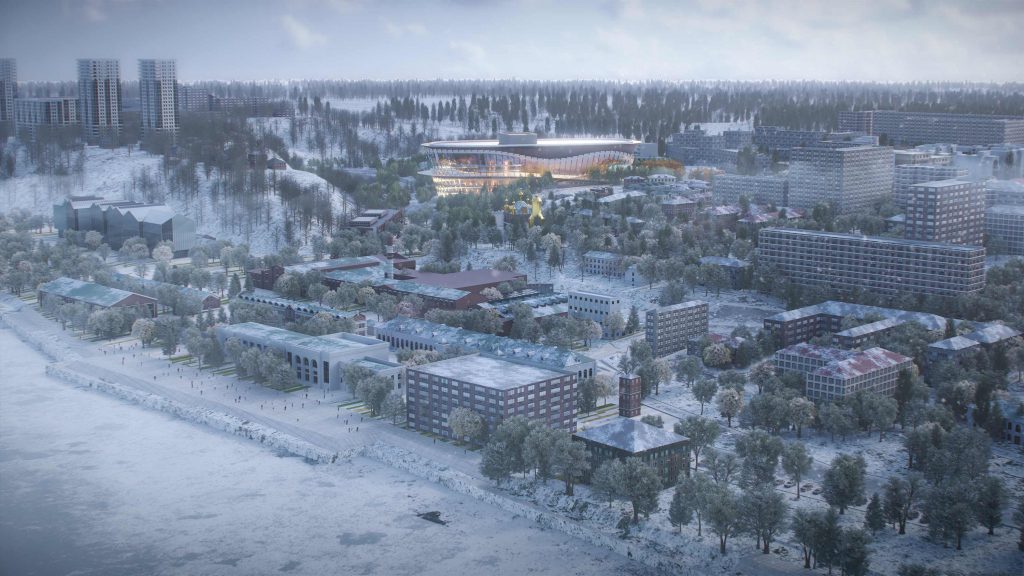
Tchaikovsky Academic Opera and Ballet Theatre by wHY Architecture
The form of the building, with its undulating roof and curving glass façade, mimics the movement of dancers who will perform there, while the palette of materials references the geology of the region and the legacy of copper mining in the southern Urals of Russia.

Tchaikovsky Academic Opera and Ballet Theatre by wHY Architecture
Inside, a series of ramps and walkways will lead to different theatres and out of the opera house, and visitors are encouraged to explore the outdoor spaces in all seasons. These formal elements extend to the surrounding park, where a series of undulating paths and terraced landscape create a sense of continuity between the built and natural environment.


Yiwu Grand Theater by MAD Architects
The project by the local architecture practice MAD architects, led by Ma Yansong, has won the international competition to design the Yiwu Grand Theater in China’s Zhejiang province as an effort by the city to elevate itself from a center of trade to a hub of culture.

Yiwu Grand Theater by MAD Architects
Located on the bank of the Dongyang River, the building appears as a boat floating on the water. It is defined by a layering of glass sails that are reminiscent of the Chinese junk boats that once transported goods across the waters, while their subtle curves echo the Jiangnan-style eaves of the ancient vernacular architecture that is typical of the region. Light and transparent, the glass layers create a dynamic rhythm of thin silky sails blowing in the wind. They act as a protective canopy around the building, resonating with the river and setting a romantic atmosphere.
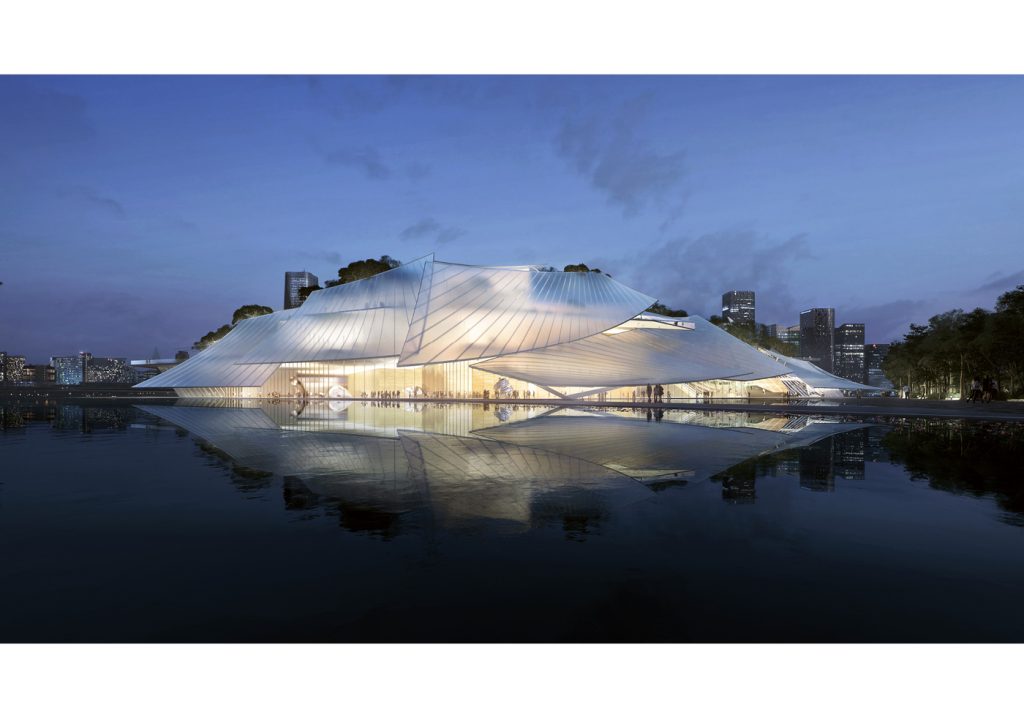
Yiwu Grand Theater by MAD Architects
Accessible from all directions, the new theatre is connected with tree-lined foot bridges from the north, while vehicular transportation can enter from the south. The scheme features an amphitheater and large open plaza that extends into the water, while landscaped terraces offer elevated views of the site’s surroundings.

Yiwu Grand Theater by MAD Architects
To reduce overall energy consumption, MAD has conceived the theater with a passive solar design. The semi-transparent glass curtain wall has been developed to not only act as a shading system, but to also optimize the use of natural light within the indoor public spaces. It creates a solar greenhouse effect in winter and serves as the ventilation system in summer.

Yiwu Grand Theater by MAD Architects
The building will house a 1,600-seat grand theater, a 1,200-seat medium theater, and an international conference center that can host up to 2,000 people. The construction is expected to begin in 2020.